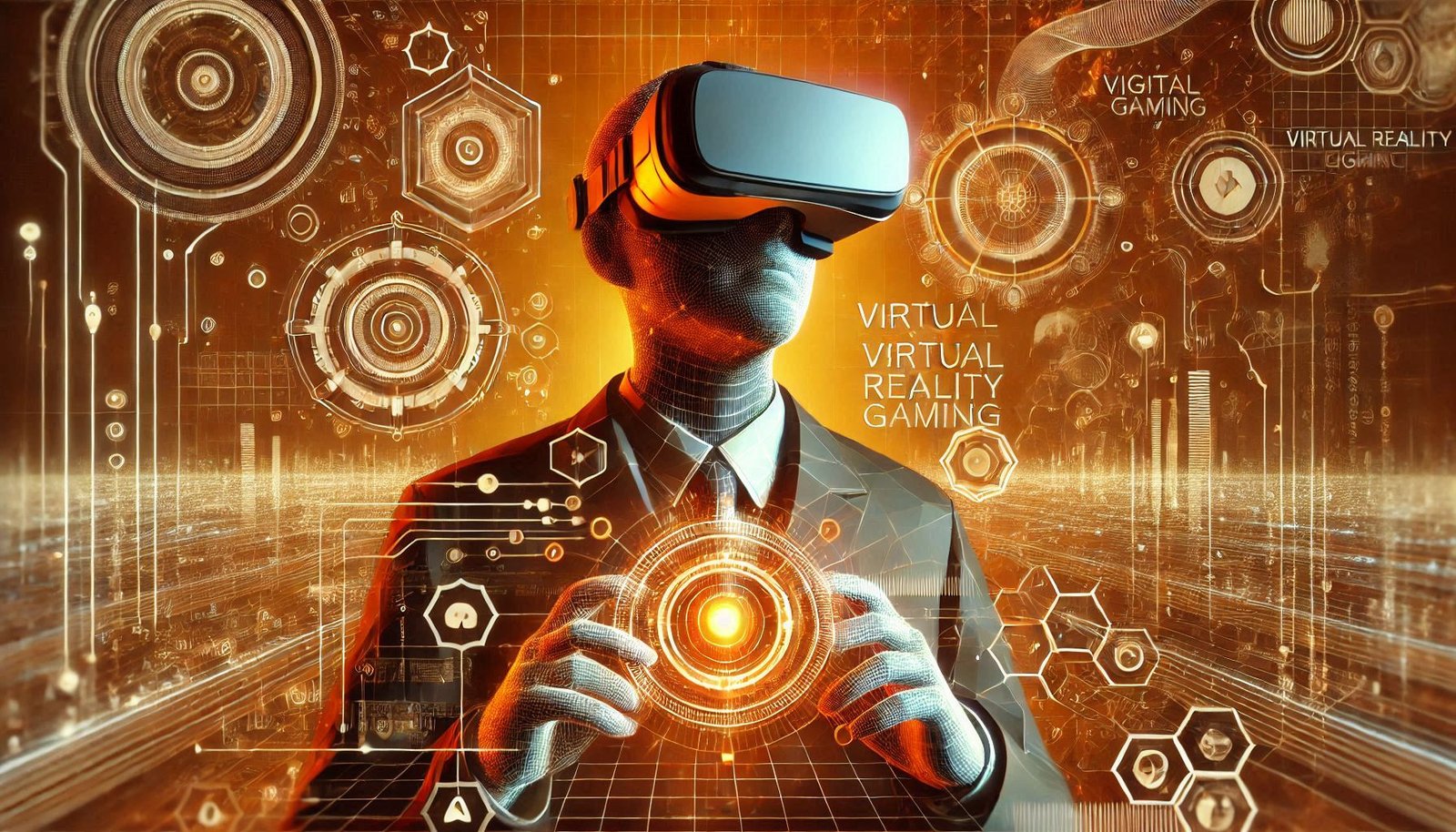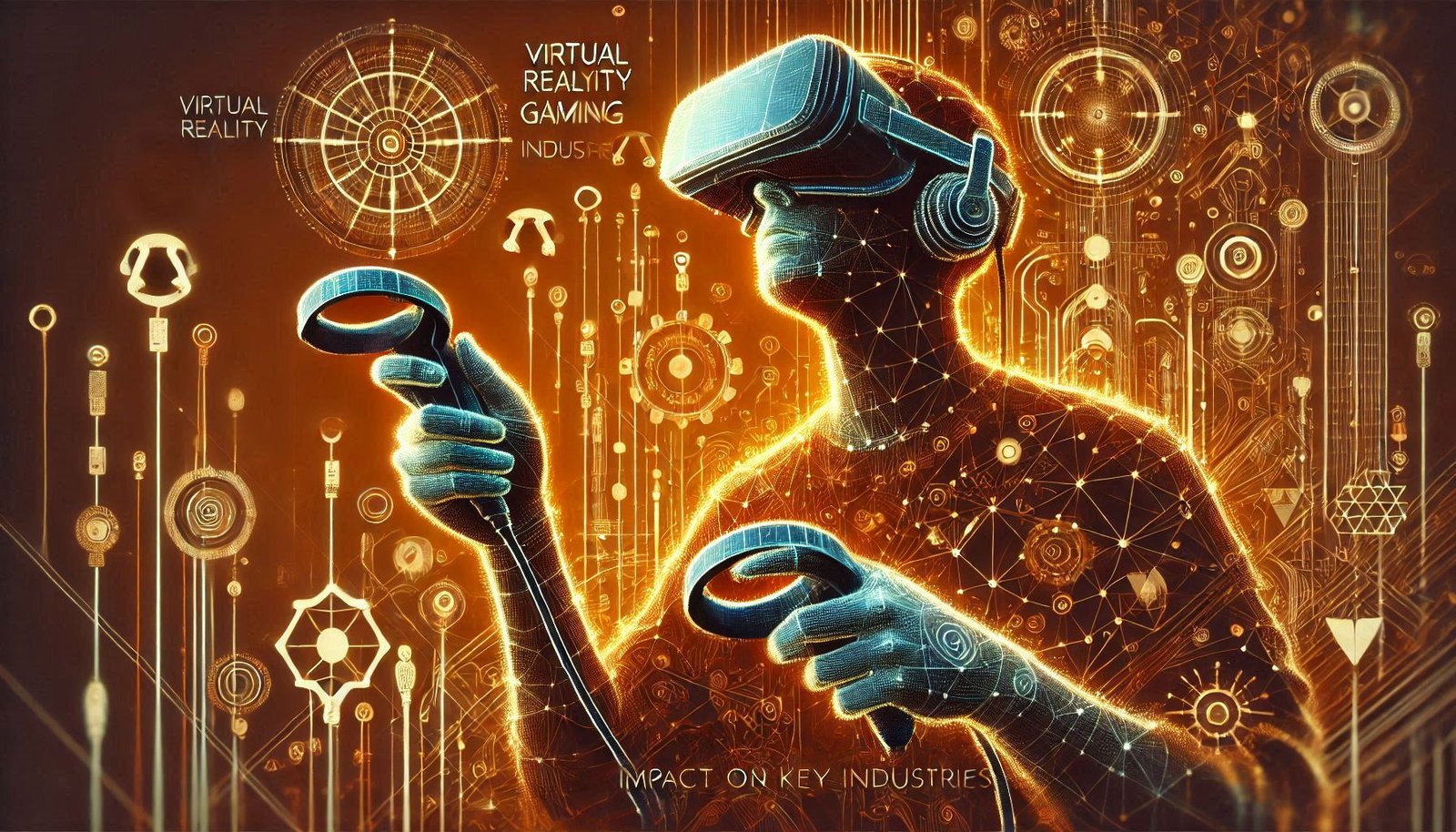So, where are we, exactly? Well, VR gaming isn’t the tech demo you saw at that convention hall five years ago (those bizarre, bulky headsets, remember?) We’ve gone from “ooh, shiny” to “holy moly, I think I just punched a dragon … with my face!” Right? This is the kind of stuff that takes a 10x pace jump for the industry. We’ve got rumbles that’ll make you think you got zapped by an internet mosquito, pixels that’d put your grandma’s glass and china shelves to shame, and games more addictive than a game of potato sack racing at the local kindergarten.
But wait, are we even discussing this? It isn’t only for gamers who live live in basements (but we salute you, digital realm warriors!). No, this is not a drill; VR gaming matters. A huge deal. It’s a possible game changer (pun absolutely intended) for how we play, socialize and, dare we say, work. Is this finally the metaverse revolution that we were promised? Is this the next phase of entertainment’s glorious evolution? Or simply a great excuse not to do laundry?
This blog post is not yet another tech review; it is a deep-dive, a giggle fest and an earnest investigation into whether VR gaming can in fact “live up to the hype,” or if it will just be an experience that we live in our slightly-too-sweaty memories. So, pick up your controllers, put on your headsets, and jump in! Think of this as your digital diving board into a world of (mostly) simulated wonder. Oh, and get ready for some mind-bending insights…or at least some really good one-liners. You’ve been warned.

First, the Good Stuff: Positive Trends
- The Hegemony Of The Standalone Superstars: Remember when VR meant being tethered to a PC like some kinda particularly clingy squid? Those days are mostly over. Standalone headsets like the Meta Quest are finally unshackled, liberating gamers and their dangling cables. Impact: This is HUGE. It’s opening the floodgates to a more mainstream adoption, which comes with more players, more revenue potential, and more… well, less tangled cables, thank god. Code name: A game that started as a PC darling like Beat Saber and became an instant hit on Quest, for the power of portability.
- Social VR: Because Loneliness is Lame: Solo gaming is so last decade. Virtual reality is going full-on “let’s all hang out!” with social experiences such as VRChat, Rec Room, and even good old Minecraft in VR. Impact: You play together, creating a community and a reason to play even longer. Think less “lone wolf” and more “gaggle of grinny, pixel-art puppies.” The sentence: The massively popular Among Us in VR transforms the paranoia and accusing finger waving into something palpable as it proves, shared enjoyment is where it’s at.
- The InfoTech Armada: VR is not just for hardcore gamers anymore. The growing popularity of lighter, more readily available experiences (see: fitness games, educational experiences) is expanding VR’s reach and Impact: It’s as if the VR party received a guest list that lives beyond the usual suspects. It’s no longer simply about blasting aliens; it’s about taking a stretch, picking up some learning, and getting lost in wonder virtually. Example: People are moving with Supernatural the Fitness Game and feeling good
Next, the Not-So-Fun-Times: Adverse Trends
- The Content Quagmire: While more VR games are definitely emerging, quality and quantity still go up and down like a hyperactive toddler on a trampoline. Impact: This leaves some gamers high and dry and others stuck in the digital equivalent of a lukewarm puddle of disappointment. For example, the “next big thing” VR games that let players down because of bugs, bad design, or shallow experiences.
- The Costly Conundrum: While prices for VR headsets have come down, they still constitute a significant investment for the average consumer. Effect: This mechanism can be a strong entry barrier that hinders and delays mass adoption. Imagine trying to get everyone to a party when the cover charge is the price of a small car.
- The Tech Tango: VR technology is a work-in-progress. The hottest headset today can be the digital dinosaur of tomorrow in the blink of an eye (and a quick uttering of “immersive”). Impact: This seemingly never-ending upgrade cycle can lead to confusion and expense for consumers, and creates uncertainty for companies determining which hardware to make the focus of their development time and energy. It’s like throwing darts at a moving target, blindfolded.
Actionable Insights: Let’s Get Strategic, Shall We?
For the Positives: See the miracle!
- Standalone is King (and Queen): The vast majority of development should be for wireless headsets, and products should focus on experiences that are easy to pick up and play.
- Community is Essential: Fortify social features, provide a place for players to meet, and encourage new content that players generate.
- It’s Great for Accessibility: Broaden your reach with games that appeal to a range of interests and abilities. Don’t gatekeep fun!
For the Negatives: Keep calm and carry on!
- Less is More, Always: When in doubt, your priority should ever be on game development, polish it, and create something that will always be engaging and fun, no matter how small it seems.
- Find the Sweet Spot: Make price points within reach, utilize new business models (subscriptions, freemium) to minimize the entry price barrier.
- Embrace the Evolution: Be ahead of the curve. Stay flexible and flexible, and don’t be afraid to experiment with new technologies as they arise.
The Final Word? The VR gaming market is a wild, wacky, and irreverent place. The businesses that can ride the positive trends, minimize the negative and lean into the fundamental weirdness of VR will be the ones who are able to strike gold in the end. So go forth, digital developers, and create some magic… or at least try not to make anyone vomit.
- Health care: Surgery isn’t a game. Or is it? VR’s allowing surgeons to run complex procedures in digital playgrounds before they pick up real steel. Imagine “Surgeon Simulator,” but, well, less likely to drop a kidney. Patients are also getting in on the VR action. Distraction therapy? No, it’s “headset hide-and-seek” from pain, with virtual beaches and mountains. Ouch be gone!
- Auto: Forget clay models — every car designer’s going to be wearing VR goggles. Forget the make-believe “drawing board,” they’re drawing in 3D space, flipping car designs like pancakes. And you know what? Customers are virtually kicking tires— showroom experiences from their couch. It’s kind of like a test drive, but where there is as much (or more!) pretend driving and “vroom vroom” mouth sounds being made.
- Manufacturing: Virtual reality is getting its hands dirty on factory floors. Workers are picking up assembly lines and working machines in a no-pressure setting.” Mess up? No sweat – just reset! It’s a bit like a supercharged video game where the goal isn’t points, but, you know, not losing a finger. Imagine going through safety training but with you know, boss level challenges — and we mean ‘boss level challenges’.
- Retail: Enter a virtual shop floor. Or don’t. It’s your choice. Retailers are building virtual shopfronts, allowing customers to scroll through clothes and furniture from the comfort of their, um, comfort. Think of trying on pants without the nightmare fitting room mirror. “Do these jeans make me look fat in my avatar?” is the new question of existentialism.
- Training: Who needs boring lectures? VR adds fun to training. From sales scenarios to emergency response drills, it’s all going virtual. In VR, you can totally fumble your pitch and not even break a sweat, the only thing you lose is your virtual dignity. Talk about a soft landing! And fewer paper cuts are a win for everyone.
Key Strategies in VR Gaming (2023 Onwards):
Organic Growth:
- Socialization Everything Improved: Companies are investing heavily into social VR. Read “persistent lobbies” where players can socialize and congregate between individual game sessions. For example, giving avatar customization options and in-game voice chatting options promotes user engagement and social interaction.
- Along with Multi-Platform: Developers are pushing for VR to be cross-headset, to the point of interest for PC/consoles. This attracts more users and minimizes dependence on a single console ecosystem. More and more games are emphasizing compatibility over a single device.
- Content Variety is king: Single-player shooters are so 2015. We are seeing developers diversify content, with the latest upsurge in interest in VR fitness games, creative tools and simulation experiences that attract a much wider audience and appealing to more everyday gamers.
- User-Generated Content (UGC): Offering tools for players to create and share their own VR experiences is an emerging strategy. This lengthens the lifespan of games and builds community ownership. SHARE PUBLISHThere are now many platforms for players to create and publish their experiences.
Free-to-Play Models — Like other sectors of the gaming industry, VR gaming is beginning to see a rise in free-to-play titles, commonly monetized with in-app purchases. This lowers the first barrier to entry and draws in a larger audience upfront.
Inorganic Growth:
- After the acquisition of VR studios and IPs is a strategic proposal for the major Players to ensure a high level of quality in their content library and talent pool; This helps to speed up growth and fortifies the position in the market. Tech giants, for instance, have absorbed VR development studios.
- Partnerships & Collaborations: Companies are joining for co-development and distribution. This enables them to co-operate and co-create and share resources and reach new audiences. VR games are being produced featuring brands and popular franchises.
- Financial Support for Emerging Tech: VR companies are pouring money into nascent technologies like haptic feedback and more sophisticated hand tracking. It marks a notable show of faith in pushing the needle further on immersive VR experiences. This is to make the sensory experience better and better.
- Metaverse Integrations: Certain VR games are starting to explore integrations with metaverse platforms, connecting experiences across virtual worlds and platforms and including VR gaming as a part of the overall Metaverse experience. Some games are joining in on these interwoven virtual arenas.
VR Game Subscription Services: Virtual reality game subscription services have become a trend. This model guarantees ongoing revenue and offers players access to an ever-changing catalog of games.
And the games? Oh, the games! To put it in simple terms, if the traditional gaming is a bicycle, then a VR gaming is… a rocket-powered unicycle mounted by a unicorn. We will see experiences evolve from individual sessions into interconnected, collective virtual realities. This means making raids parties to high-five each other. Who has time for water cooler chat when you can slay dragons together, anyway? It’s about to get all interactive and personal around here.

Like whoa, before we go and picture ourselves as all virtual reality goggle-wearing, wickedy-wickedy-woo superheroes, shall we remember that aint all cherry-tasting, and fo yet, do five second intergrsilent? There’s hurdles, folks! Think adoption rates, unwieldy hardware, and occasional motion-sickness incidents. Well, even the Wright brothers had to crash land a few!
So, what’s the takeaway here? VR gaming could be the metaverse revolution we’ve all been waiting for, or, you know, it might not be. But it’s one hell of a ride regardless, don’t you think? Will you put on some VR goggles and jump through to the unknown, or are you going to be a ‘wait-and-see’ consumer?





